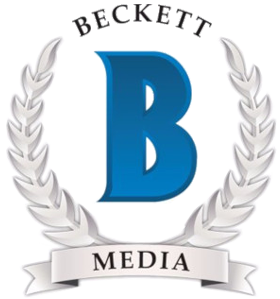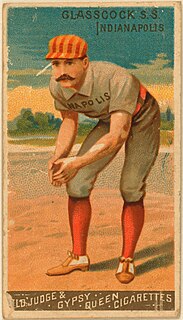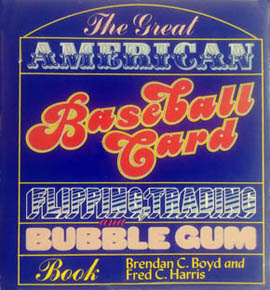 W
WA baseball card is a type of trading card relating to baseball, usually printed on cardboard, silk, or plastic. In the 1950's they came with a stick of gum and a limited number of cards. These cards feature one or more baseball players, teams, stadiums, or celebrities. Baseball cards are most often found in the U.S. mainland but are also common in Puerto Rico or countries such as Canada, Cuba and Japan, where top-level leagues are present with a substantial fan base to support them. Some notable baseball card producing companies include Topps, Upper Deck Company, and Panini Group. Previous manufacturers include Fleer, Bowman, and Donruss. Baseball card production peaked in the late 1980s and many collectors left the hobby disenchanted after the 1994-95 MLB strike. However, baseball cards are still one of the most influential collectibles of all time. A T206 Honus Wagner was sold for $2.8 million in 2007.
 W
WBowman Gum, formerly Gum Inc., had produced the 'Play Ball' sets from 1939 to 1941. No further sports trading card sets were produced until 1948 because resources such as paper as well as the factories were needed for the war effort. When Bowman resumed printing cards they did so with national sets in three sports ushering in the modern era of trading cards. The following is a list with brief summary of Bowman trading card products for the 1940s.
 W
WThe 1940s was both the beginning and end of an era for trading cards. There was virtually nothing produced in the great divide caused by World War II. Up to 1941 manufacturers like Gum Inc. and Goudey, had raised the bar on the confection industry by leaving behind the tobacco age of marketing to adults and bringing forth the bubble gum age and marketing to children. Topps had been primarily a gum company but took up adding premiums to their products after the war. Their first sets featured various sizes and numerous topics, mostly non-sport. The most notable is the Bazooka Gum comics although the earlier issues did not yet feature Joe and his gang. Below are descriptions of Topps products that were issued in the 1940s.
 W
WIn the 1950s, Bowman Gum Company produced baseball and football cards from 1950 to 1955, continuing their post-war production that resumed in 1948. Bowman was the only major sports card manufacturer in 1950. The monopoly was short lived, as Topps Chewing Gum began producing cards in 1951. The rivalry lasted five years, punctuated by disputes over exclusive contracts with players. In 1956, faced with diminishing profits due to legal fees and increasing production costs, Bowman was bought out by Topps in 1956 for $200,000. The following provides a brief summary of trading card sets issued during the 1950s by Bowman.
 W
WThe company Topps joined the sports cards market in the 1950s becoming a rival to Bowman. After competing with each other for five years Topps bought out Bowman in 1956. Competition still remained however, in the form of Parkhurst hockey cards. Topps produced cards of the United States-based National Hockey League teams while Parkhurst covered the Canadian teams. Topps had produced multi-sport photo cards prior to 1950, namely the 1948 Topps Magic Photos but each set was very small and not considered a major set. This trend was consistent with their first baseball and college football issues: the 1950 Feltbacks resembled college pennants; 1951 Magic football included a scratch-off game on the reverse; Red/Blue Backs intended to be a card game; Connie Mack/Current All-Stars are foldable stand-ups. It was in 1952 that Topps released their first truly major card set. In the autumn of 1951, Woody Gelman and Sy Berger, then a 28-year-old veteran of World War II, designed the 1952 Topps baseball card set on the kitchen table of Berger's apartment on Alabama Avenue in Brooklyn. The 1957 Topps set featured dimensions of 2½ by 3½ inches which has become known as the standard card size. Below is a list with brief descriptions of Topps trading card products for the 1950s.
 W
WDespite a brief attempt by Fleer to sign baseball players in 1963, Topps continued its reign as the only major baseball card manufacturer in the United States. On the other hand, Football had more than one professional league in operation, allowing for competing companies to co-exist by producing a major national set for each league. Topps was able to produce National Football League sets from 1960 to 1963 while Fleer issued American Football League sets. Topps then began producing AFL sets from 1964 to 1967 while Philadelphia Gum issued NFL sets. Before the end of the decade Topps revived their basketball issue after a ten-year hiatus. The following is a list with brief descriptions of Topps sports card products for the 1960s. All cards listed are standard size(2½ × 3½ inches). Exceptions are noted.
 W
WThe 1965 Topps baseball trading card set is a set filled with rookie cards of future stars. The cards originally were found in wax packs. Now the wax packs can sell for up to $800. The big cards in the set are the rookie Steve Carlton ($250), Mickey Mantle ($500), Hank Aaron ($150–$200), Pete Rose ($300–$550), and the Ernie Banks ($150–$250).
 W
WThe 1970s saw Topps go largely uncontested in the sports card market. The decade featured full runs of baseball, football, basketball, and hockey. Aside from issues like Kellogg's cereal premiums which ran throughout the 70s there was not much in the way of major national card manufacturers to compete with. Topps maintained its license agreement with O-Pee-Chee in baseball and hockey. The company would have significantly more ground to cover given the growth of the professional sports leagues during the decade. Major League Baseball added four new teams in 1969 and two in 1977; the National Football League added two teams in 1976; the National Basketball Association gained three in 1970, one in 1974, and the American Basketball Association picked up one in 1972; the National Hockey League acquired two teams in each of 1970, 1972, and 1974. Soccer also made the Topps roster in the 70s, producing English and Scottish 'Footballers' for distribution in the United Kingdom. Domestic soccer was not to be forgotten with a North American Soccer League sticker set in 1979. The following are trading card sets issued by Topps in the 1970s. All cards listed are standard size. Exceptions are noted.
 W
WThis a list with brief descriptions of Topps trading card products for 1981. All sets listed are standard size unless noted.
 W
WThis a list with brief descriptions of Topps trading card products for 1982. All sets listed are standard size unless noted.
 W
WThis a list with brief descriptions of Topps trading card products for 1983. All sets listed are standard size unless noted.
 W
WThis a list with brief descriptions of Topps trading card products for 1984. All sets listed are standard size unless noted.
 W
WThis a list with brief descriptions of Topps trading card products for 1985. All sets listed are standard size unless noted.
 W
WThis a list with brief descriptions of Topps trading card products for 1986. All sets listed are standard size unless noted.
 W
WThis a list with brief descriptions of Topps trading card products for 1987. All sets listed are standard size unless noted.
 W
WThis a list with brief descriptions of Topps trading card products for 1988. All sets listed are standard size unless noted.
 W
WThis a list with brief descriptions of Topps trading card products for 1989. All sets listed are standard size unless noted.
 W
WThis a list with brief descriptions of Topps trading card products for 1990. All sets listed are standard size unless noted.
 W
WThis a list with brief descriptions of Topps trading card products for 1991. All cards listed are standard size. Exceptions are noted.
 W
WThis a list with brief descriptions of Topps trading card products for 1992. All cards listed are standard size. Exceptions are noted.
 W
WThe Baseball Card Adventures is a novel series written by Dan Gutman. There are 12 books in the series, published by HarperCollins between 1999 and 2015. The books feature a boy, Joe Stoshack, who can travel through time when he touches old baseball cards. When he holds a baseball card, he feels a tingling sensation, and when it gets strong, is transported to the year that card was made and somewhere near the ballplayer on the card. Later he discovers that this power also works on very old photographs. He tries to use this power wisely, and he attempts to change history several times, but the result is always something different from his original goal.
 W
WAllen & Ginter was a Richmond, Virginia, tobacco manufacturing company formed by John F. Allen and Lewis Ginter around 1880. The firm created and marketed the first cigarette cards for collecting and trading in the United States. Some of the notable cards in the series include baseball players Charles Comiskey, Cap Anson, and Jack Glasscock, as well as non-athletes like Buffalo Bill Cody.
 W
WThe American Card Catalog: The Standard Guide on All Collected Cards and Their Values is a reference book for American trading cards produced before 1951, compiled by Jefferson Burdick. Some collectors regard the book as the most important in the history of collectible cards.
 W
WBaseball Hobby News was a United States-based news-oriented magazine about the field of baseball memorabilia collecting. Founded in 1979 by the husband-and-wife team of Frank and Vivian Barning, who served as editor and publisher, respectively, the magazine was published on a monthly basis until 1993.
 W
WBaseball menko are an early type of Japanese baseball cards, originally designed for use in the children's game of menko, but now avidly collected by baseball fans and card collectors. The word "menko" is used in both the singular and the plural form.
 W
WBaseball Talk was a set of 164 "talking" baseball cards that were released by Topps and the LJN Corporation during the spring of 1989. Each card featured a plastic disk affixed to the back of an oversized baseball card. When placed in the SportsTalk player the cards would play two to three minutes of recorded audio. The player retailed for $24.99 and was labeled for ages six and up. It required four AA alkaline batteries to operate.
 W
WBeckett Media is a media company that specializes in coverage of sports card and sports memorabilia markets. The company was founded in 1984 by James Beckett as Beckett Publications.
 W
WSeymour Perry Berger was an employee of the Topps company for over 50 years. He is credited as being the co-designer of the 1952 Topps baseball series, as is regarded as "the father of modern baseball cards".
 W
WJefferson R. Burdick (1900–1963) was a collector of American printed ephemera, including postcards, posters, cigar bands, and other types of printed materials dating from the mid-nineteenth century to the early 1960s. He is best known for collecting trading and baseball cards in The American Card Catalog, otherwise known as the ACC.
 W
WWoodrow Gelman was a publisher, cartoonist, novelist and an artist-writer for both animation and comic books. As the publisher of Nostalgia Press, he pioneered the reprinting of vintage comic strips in quality hardcovers and trade paperbacks. As an editor and art director for two-and-a-half decades at Topps Chewing Gum, he introduced many innovations in trading cards and humor products.
 W
WGoodwin & Company was an American tobacco manufacturer from New York City. Initially E. Goodwin and Brother, the company was founded before the American Civil War. It was known for its cigarette brands "Gypsy Queen" and "Old Judge". In 1890, the company was merged, along with four others, into James Buchanan Duke's American Tobacco Company to create an American monopoly on tobacco product manufacturing and retail.
 W
WThe Great American Baseball Card Flipping, Trading and Bubble Gum Book is a book written by Brendan C. Boyd & Fred C. Harris about baseball cards, primarily ones issued during the 1950s and 1960s, and the players on the cards.
 W
WLeaf International BV was a confectionery company founded in the 1940s. Leaf had sales of approximately €527m (2010) and 2,400 employees. It had 11 factories in seven countries. Leaf was owned by CVC Capital Partners, Nordic Capital, and management. Bengt Baron was the CEO of Leaf.
 W
WThe O-Pee-Chee Company, Ltd. was a Canadian confectionery company founded in 1911 that produced candy until the mid-1990s. Based in London, Ontario, the company produced its first trading card sets in the 1930s, releasing several collections of baseball, gridiron football and ice hockey cards until the company was sold to Nestlé in 1996.
 W
WSports Collectors Digest (SCD) is an American advertising weekly paper published at Iola, Wisconsin. The magazine provides an avenue through which sellers, traders and avid buyers of Sports cards and other memorabilia may interact.
 W
WT200, also known as Fatima Team Cards, were a type of cigarette card issued in 1913 by the Liggett & Myers Tobacco Company (L&M) through the Fatima cigarette brand. The set featured photos of professional baseball teams. The 'T200' designation comes from the American Card Catalogue, an authoritative guide to trading cards issued prior to 1951.
 W
WThe T202 Baseball cards, also known as the Hassan Triple Folder were baseball cards manufactured and distributed by the American Tobacco Company in 1912. The cards were inserted into packs of "Hassan Cork Tip Cigarettes". Several characteristics make this vintage card a standout amongst other forms of tobacco advertising of the time and lend to its value as a highly sought-after collectible.
 W
WThe T205 was a baseball card set issued in 1911 by the American Tobacco Company through 11 different cigarette brands owned by it. The collection is considered a landmark set in the history of baseball card collecting.
 W
WT206 is a tobacco card set issued from 1909 to 1911 in cigarette and loose tobacco packs through 16 different brands owned by the American Tobacco Company. It is a landmark set in the history of baseball card collecting, due to its size and rarity, and the quality of its color lithographs. Several of the cards are among the most expensive sports cards ever sold.
 W
WThe T206 Honus Wagner baseball card depicts the Pittsburgh Pirates' Honus Wagner, a dead-ball era baseball player who is widely considered to be one of the best players of all time. The card was designed and issued by the American Tobacco Company (ATC) from 1909 to 1911 as part of its T206 series. Wagner refused to allow production of his baseball card to continue, either because he did not want children to buy cigarette packs to get his card, or because he wanted more compensation from the ATC. The ATC ended production of the Wagner card and a total of only 50 to 200 cards were ever distributed to the public, as compared to the "tens or hundreds of thousands" of T206 cards, over three years in sixteen brands of cigarettes, for any other player. In 1933, the card was first listed at a price value of US$50 in Jefferson Burdick's The American Card Catalog, making it the most expensive baseball card in the world at the time.
 W
WT213 was a baseball card set issued between 1910 and 1919 by tobacco manufacturer Coupon Cigarettes, based in New Orleans.
 W
WThe Topps Company has created a number of different baseball card products during its existence. They originally started as a chewing gum company, using the baseball cards as a sales gimmick to make the gum more popular, but today it is primarily a baseball card company.
 W
WW711-2 was a baseball card set of 35 total unnumbered, black and white cards measuring 2 1⁄8" × 2 5⁄8" released in 1940. The complete set was issued by the Cincinnati Reds baseball club, and sold at the ballpark. 29 cards feature a player's portrait photo on the front while name, position and biographical information and five years worth of statistics are on the back.
 W
W W
W